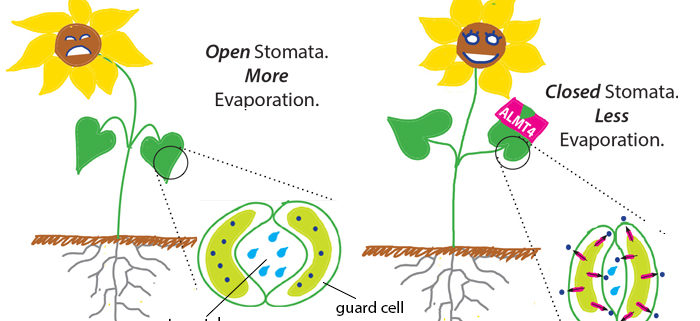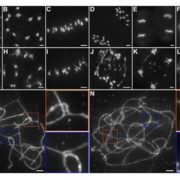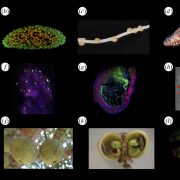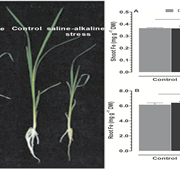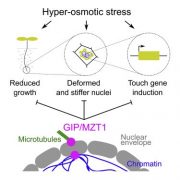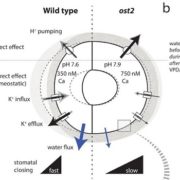An Ion Channel Active in Plant Drought Response
Eisenach et al. discover A new ion channel of the plant vacuole helps plants react to drought https://doi.org/10.1105/tpc.17.00452
By Cornelia Eisenach
Background: Stomata are small pores on plant surfaces that facilitate diffusion of CO2, O2 and water vapor between plant and atmosphere. During drought, plants need to conserve water to avoid wilting and death. They do so by reducing stomatal pore size, causing less water to evaporate. The stomatal pore is an opening formed between two guard cells, which move to control the size of the pore. A plant hormone called abscisic acid ABA causes guard cells to deflate and close the pore between them. This is achieved when molecules known as osmolytes, such as K+, malate, other anions and sugars, flow out of the guard cell. The outward flow of these solutes is accompanied by a flow of water in the same direction, through the process called osmosis. This water loss from the cell causes a decrease of turgor pressure in the guard cell, leading to deflation of the cells, which closes the stomatal pore formed between them.
Question: The osmolytes are stored in the vacuole, a large intracellular organelle occupying up to 90% of the cell volume. During stomatal closure, solutes need to cross the vacuolar membrane. How is the osmolyte malate transported out of the vacuole when ABA signals that the stomata should close?
Finding: We identified a channel called ALMT4, which is responsible for outward flow (termed efflux) of malate during ABA-induced stomatal closure in Arabidopsis. We used mutant plants to show that when ALMT4 is missing, stomata do not close efficiently in response to ABA or during water shortage. To find out why, we analysed ALMT4-mediated transport using the patch-clamp technique, which allows the measurements of currents across a membrane. We found that ALMT4 has distinct transport characteristics that allow it to mediate malate efflux. We also showed that ALMT4 activity depends on phosphorylation, a common post-translational modification. Phosphorylation abolishes ALMT4 activity, and a dephosphorylated, active channel is required for stomatal closure.
Next steps: How ABA signalling and ALMT4 phosphorylation are connected is a question for future research projects.
Cornelia Eisenach, Ulrike Baetz, Nicola V. Huck, Jingbo Zhang, Alexis De Angeli, Gerold Beckers, Enrico Martinoia. (2017). Vacuolar Anion Channel in Stomatal Movement. Plant Cell https://doi.org/10.1105/tpc.17.00452


